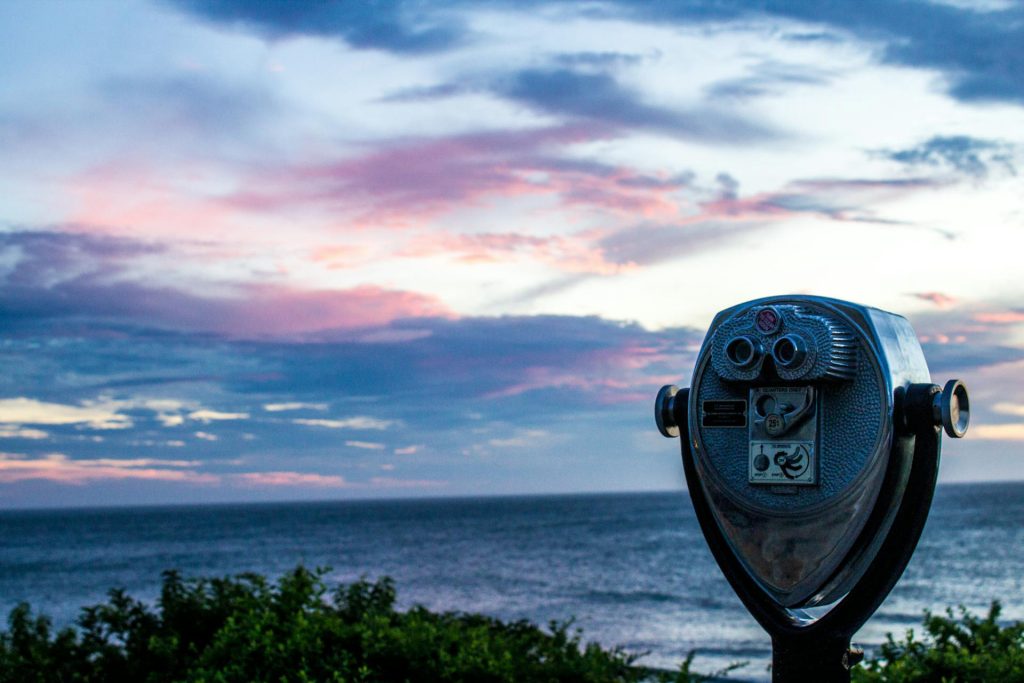Whale watching in Montauk, New York, is a magical experience for nature lovers and ocean enthusiasts alike. From majestic humpbacks to playful dolphins, Montauk’s waters are a hub for marine wildlife. In this post, I’ll share the fascinating types of whales you can see in Montauk during your visit, along with tips to enhance your whale watching adventure.
Key Takeaways
- Several whale species can be found in Montauk, including humpback whales, fin whales, minke whales, North Atlantic right whales, blue whales, pilot whales, and sperm whales.
- Whale watchers might see various whale behaviors such as breaching, tail slapping, spy-hopping, bubble net feeding, pectoral slapping, fluking, and logging.
- Montauk’s location and the abundance of krill, plankton, and fish make it an ideal feeding ground for whales.
- For a successful whale watching experience, choose the right time, pack essentials, and book with reputable tour operators.
- Support sustainable tourism and marine conservation through whale watching activities.
1. Humpback Whales: The Show-Stoppers of Montauk

Humpback whales are a favorite among whale watchers for their acrobatic displays and signature tail flukes. These whales can grow up to 60 feet long and weigh as much as 40 tons!
What to Look For
- Breaching: Humpbacks are known for leaping out of the water.
- Fluking: Watch for their iconic tail flukes as they dive.
The best time to see humpbacks in Montauk is during their migration season from June to October. This is when they migrate to feeding grounds rich with krill and small fish. If you’re lucky, you might even hear their enchanting songs using hydrophones provided on some tours.
2. Fin Whales: Long and Sleek
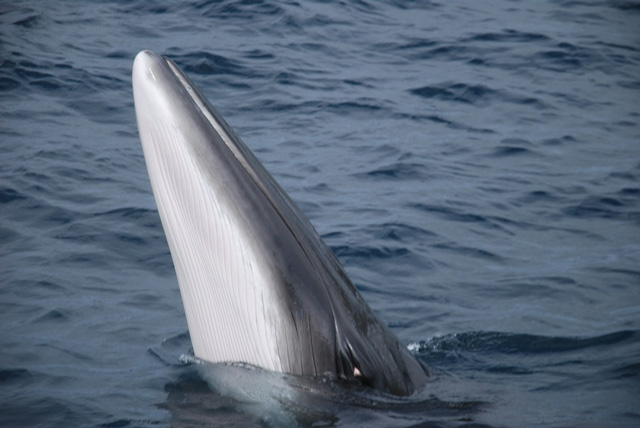
Second only to the blue whale in size, fin whales are often called “greyhounds of the sea” due to their speed. These sleek whales can reach lengths of 80 feet, weigh as much as 80 tons, and are frequently spotted in Montauk’s waters during the late summer months.
Fun Fact
Their asymmetrical jaw coloring—white on one side and dark on the other—is unique among baleen whales and is thought to help with hunting.
Keep your eyes peeled for their tall, column-like spouts on calm days.
3. Minke Whales: Small but Mighty
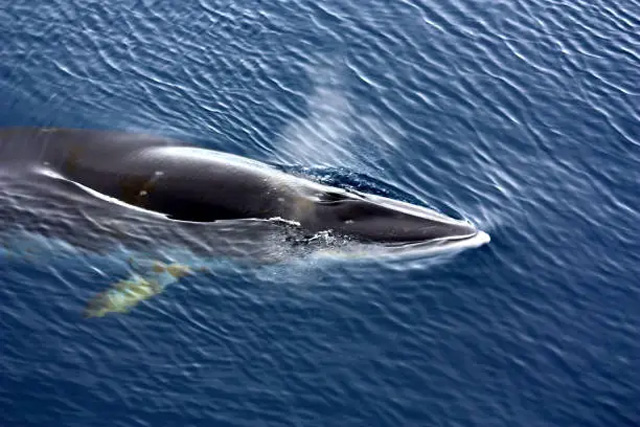
Minke whales are the smallest baleen whales you’ll see around Montauk, typically growing up to 35 feet and weighing as much as 10 tons. Despite their smaller size, they’re fast swimmers. These whales are often spotted during peak summer months and are recognized by their pointed snouts and white bands on their flippers.
Tips for Spotting Minkes
- Look for their curved dorsal fins and smooth surfacing behavior.
- They’re more commonly seen closer to the shore.
4. North Atlantic Right Whales: A Rare Sight
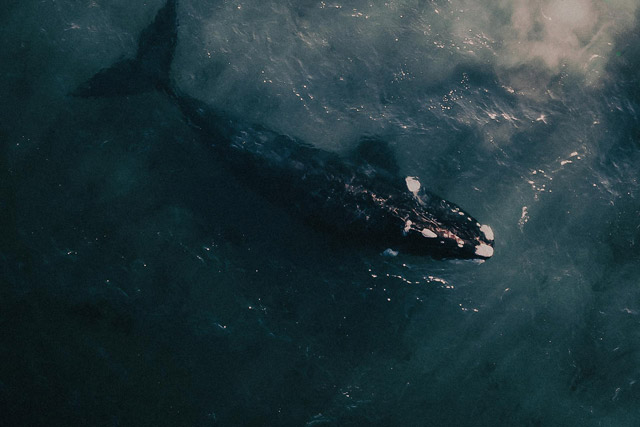
Spotting a North Atlantic right whale in Montauk is a special treat due to their critically endangered status. These whales are identifiable by the rough patches of skin, called callosities, on their heads.
Conservation Efforts
Montauk’s whale watching tours often support organizations working to protect these magnificent creatures. By participating, you’re contributing to their conservation!
5. Blue Whales: Largest Animal on Earth
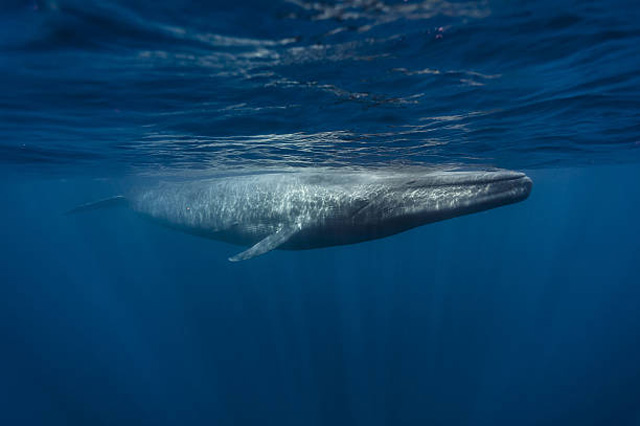
Blue whales are enormous! The AVERAGE blue whale can be about 80 feet long. Big blues can grow to 94 feet, which is the size of an NBA basketball court. Think that’s big? The longest blue whale ever measured was 110 feet long!
It’s somewhat funny that the biggest animal in the world eats krill. Krill are small, shrimp-like animals barely the length of your thumb.
Fun Fact
A blue Whale’s heart can be the size of a small car.
6. Pilot Whales: The Sociable Pods
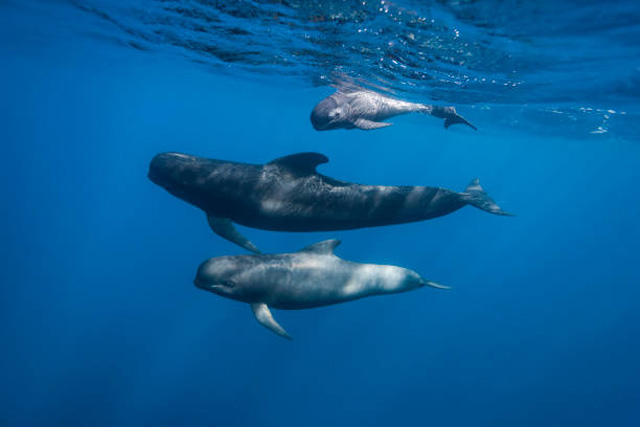
Pilot whales, often seen in pods, are known for their playful and curious nature. These toothed whales are smaller than baleen species but make up for it with their charming personalities.
What Makes Them Unique
- Pilot whales often approach boats, giving watchers an up-close look.
- They’re known for their bulbous heads and dark coloring.
7. Sperm Whales: Legends of the Deep
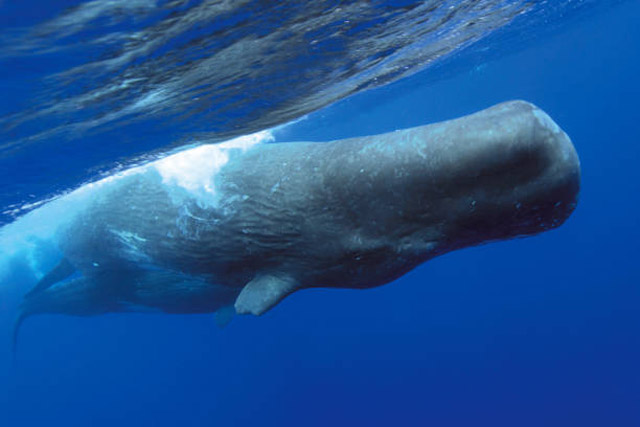
Sperm whales are the inspiration behind Herman Melville’s Moby Dick. These deep-diving whales are famous for their large heads and complex social structures.
Best Viewing Times
While less common, sperm whales can occasionally be seen during the summer months near Montauk.
Behavioral Patterns of Whales You Can See in Montauk
One of the most captivating aspects of whale watching is observing their unique and often awe-inspiring behaviors. Each movement provides a glimpse into the mysterious and fascinating lives of these marine giants. Here are some of the most common—and exciting—behaviors you might witness while whale watching in Montauk:
Tail Slapping:
When a whale raises its massive tail (or fluke) and smacks it against the water’s surface, it creates a loud, resounding splash. This behavior, known as lobtailing, is thought to serve multiple purposes. Whales may do this to communicate with others, signal danger, or simply as a playful activity. It’s a thrilling sight and sound that’s hard to forget!
Breaching:
Arguably the most dramatic display in the whale world, breaching occurs when a whale launches itself out of the water and crashes back down with an enormous splash. Scientists believe breaching serves various functions, from dislodging parasites to communicating with others or simply having fun. Watching a 40-ton whale propel itself skyward is a moment of pure magic that leaves spectators in awe.
Spy-Hopping:
Ever seen a whale’s head rise vertically out of the water as if it’s peeking at the world above? That’s spy-hopping! This behavior allows whales to take a look around, perhaps checking out their surroundings or observing nearby boats. It’s a reminder of just how curious and intelligent these creatures are.
Bubble Net Feeding:
While less common in Montauk, this behavior is a fascinating cooperative feeding technique often associated with humpback whales. A group of whales will blow bubbles in a circle around a school of fish, creating a “net” to trap their prey before lunging upwards to feast. Seeing this intricate teamwork in action is truly mesmerizing.
Pectoral Slapping:
Sometimes humpback whales will lie on their sides or backs and slap the water with their long pectoral fins. This playful behavior, also known as pec-slapping, may serve as a form of communication or a way to ward off predators. The slaps create a sound that can be heard for miles underwater.
Fluking:
Before diving deep into the water, many whales raise their tails above the surface, offering a fantastic photo opportunity. Known as fluking, this behavior is a sign that a whale is embarking on a deeper dive, often in search of food.
Logging:
When whales rest at the surface, appearing almost motionless, this is referred to as logging. It’s their version of napping, and while it may not seem as exciting as breaching or tail slapping, it’s a serene and peaceful moment that allows you to appreciate their massive size and calm demeanor.
Seasonal Appearance
Whale watching in Montauk offers an exciting opportunity to observe a variety of whale species, each with its unique seasonal patterns. The timing of their appearance often aligns with their migration routes and feeding habits, as they follow schools of fish and krill that thrive in the nutrient-rich waters off Montauk. Here’s a closer look at the whale watching seasonal peaks for the most commonly spotted whales:
- Fin Whales: Often seen in August and September.
- Humpback Whales: Most active from June to September.
- Minke Whales: Peak sightings in July and August.
Why Montauk is a Whale Watching Hotspot
Montauk sits at a crossroads of marine migration paths, making it one of the best locations on the East Coast of the United States for spotting whales. These nutrient-rich waters off Montauk Point, and areas near the continental shelf, create an abundant buffet for the ocean’s giants, drawing them in droves during the peak whale watching season from May to October.
The convergence of ocean currents stirs up nutrients from the seafloor, fostering a thriving ecosystem that supports the prey whales depend on.
What’s on the Menu for Montauk’s Whales?
- Krill:
Tiny, shrimp-like creatures may not look impressive, but krill are a cornerstone of the marine food chain and a favorite for many baleen whales. Humpback and fin whales are known to devour massive amounts of krill in a single day, sometimes consuming up to 3,000 pounds! Montauk’s cool waters provide an ideal environment for krill blooms, particularly during the summer months, making this region irresistible to hungry whales. - Plankton:
Phytoplankton and zooplankton are another essential food source that flourishes in Montauk’s nutrient-dense waters. Phytoplankton, microscopic plant-like organisms, fuel the food chain by feeding zooplankton, which in turn becomes prey for small fish and krill. This bounty sustains filter-feeding whales, such as humpbacks and minke whales, as they glide through Montauk’s waters with their mouths wide open, scooping up plankton and small prey by the gallon. - Fish:
Schools of small fish, like sand eels, herring, and menhaden, are abundant in the Montauk area and serve as prime targets for whales. Fin whales, in particular, are known to lunge through dense fish shoals, gulping down thousands of fish in a single pass. These small fish are packed with the energy-rich oils and nutrients whales need to fuel their long migrations. - Squid:
Squid may not be a staple for all whales, but species like pilot whales and the occasional sperm whales spotted off Montauk relish these slippery cephalopods. Squid are high in protein and energy, making them a sought-after treat for predators cruising through the deep waters near Montauk’s continental shelf.
The Perfect Spot for Whale Activity
The presence of such a rich and varied food supply ensures that whales aren’t just passing through Montauk—they’re feeding, playing, and sometimes even breaching in spectacular displays. Watching these marine giants in action provides a glimpse into the delicate balance of the ocean’s ecosystem, showcasing just how vital Montauk’s waters are to their survival.
Tips for the Best Whale Watching Experience
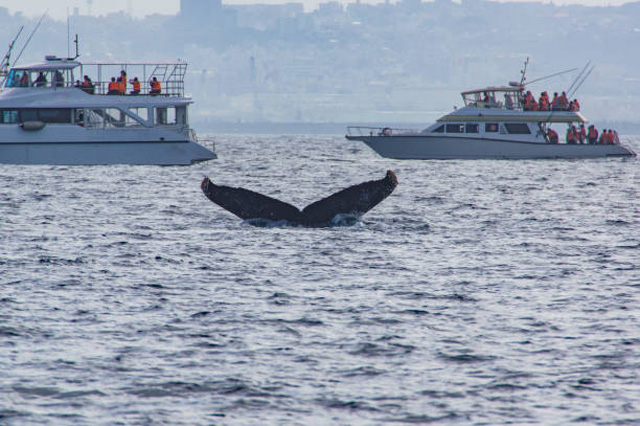
- Choose the Right Time: The peak season for whale watching in Montauk is between May and October, with the summer months offering the highest sightings.
- Pack the Essentials: Binoculars, sunscreen, and a light jacket can make your trip more comfortable.
- Book with Reputable Tours: Many Montauk-based tours are led by experienced naturalists who share valuable insights and ensure eco-friendly practices.
Supporting Marine Conservation Through Whale Watching
Every ticket sold for a whale watching tour contributes to local conservation efforts, ensuring these incredible creatures can thrive for generations to come. As someone who has seen how awe-inspiring these whales are, I encourage you to support sustainable tourism.
Conclusion
Montauk’s waters are a treasure trove of marine life. From massive humpbacks to sociable pilot whales, the diversity of species here is truly remarkable. Each trip out on the water to see whales is an adventure filled with awe, inspiration, and a deeper appreciation for the ocean.
If you’re planning a visit, I hope this guide helps you prepare for an unforgettable experience. Whale watching in Montauk is more than just a fun activity—it’s a chance to connect with nature in a way that leaves lasting memories.

